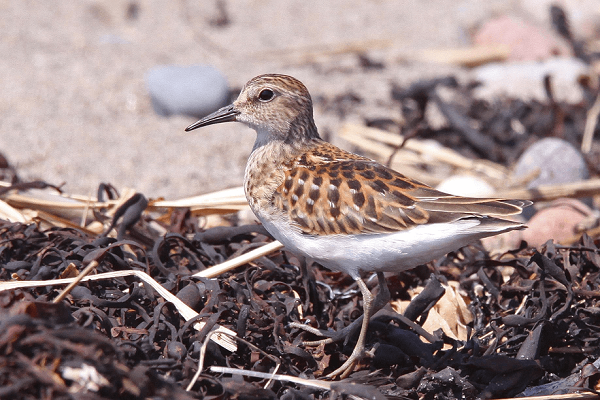Celebrating World Wildlife Day 2022
March 3, 2022
World Wildlife Day 2022 marks the need to recover key species for ecosystem restoration, and recognizes how loss of species, habitats, and ecosystems threaten the delicate balance of life on Earth. The International Union for Conservation of Nature (IUCN) estimates that globally over a million species face the threat of extinction. It is critical that wildlife and habitat are conserved so that biodiversity-based resources can be sustained now and for generations to come.
At J.D. Irving, Limited (JDI), wildlife and biodiversity are important parts of our operations and something that our Woodlands and Atlantic Towing teams encounter every day, both in the forests and at sea.
At Sea
Sustainable Oceans
Atlantic Towing (ATL) is a Green Marine certified organization and has maintained this accreditation since 2008. Green Marine is a voluntary, transparent, and inclusive program encompassing ship owners, ports, seaways, terminals, and shipyards across North America. To qualify, organizations benchmark their annual performance against 12 key environmental indicators. These include greenhouse gas emissions, environmental leadership, community impact, and underwater noise, among others. Over the 14 years since becoming a Green Marine organization, ATL has increased its efforts to drive environmental performance, specifically relating to marine wildlife awareness and reducing underwater noise.
The company’s Marine Mammal Management Plan was issued in 2020 and covers all ATL’s areas of operation. In addition, ATL meets the International Organization of Standardization (ISO) 14001 and ISO 450001, strict voluntary standards that specify requirements and a framework for effective environmental management and safety systems.
Further, in 2021, ATL announced nearly $5 million in funding to implement novel battery technologies in the Atlantic Shrike, one of its diesel-electric hybrid platform supply vessels operating in Newfoundland and Labrador. This will reduce current emissions by up to 800 tonnes of CO2 equivalent per year and put the company in an enhanced position to reduce Greenhouse Gas Emissions, and demonstrate leadership in the Offshore Oil and Gas sector.
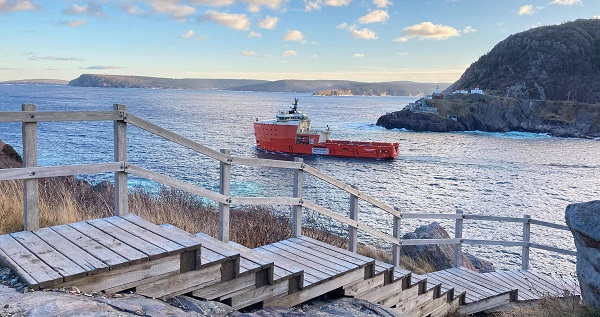
Protecting Marine Mammals
Each vessel in ATL's fleet - tugboat or offshore vessel - is equipped with a copy of A Mariner's Guide to Whales in the Northwest Atlantic, a guidebook that helps crew members identify and steer clear of whales, dolphins and other marine mammals they might encounter while at-sea. Large posters provide additional information, like common whale population distribution maps, critical habitat zones and contact numbers for reporting marine mammal observations, incidents or sightings to the Department of Fisheries and Oceans.
"If you see tail, fin or spray - stay far enough away!"
ATL vessels take additional precautions, complying with mandated or advised speed reduction zones and avoiding regions known to have dense populations of marine life (voluntary avoidance areas). The business goes above and beyond to relay these recommendations and regulations to the vessels and their crews, and it participates in various marine wildlife observance programs.
While vessels do their very best to avoid marine mammals during transit, many ATL seafarers have had encounters with wildlife during their travels. Here are a few shots submitted by team members!
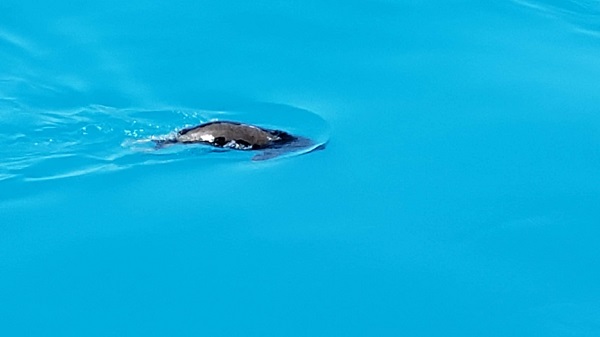
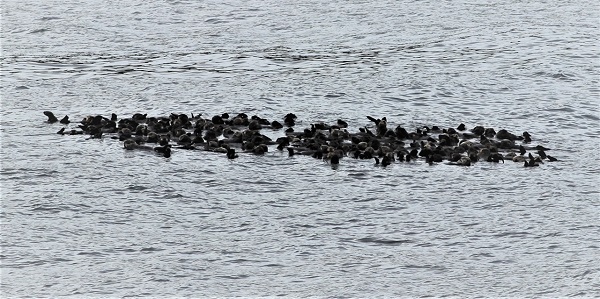
On Land
Almost 25%, or over 1,500,000 acres, of the forest lands we own or manage have a primary objective of conservation. Our Woodlands’ team of foresters are trained annually to identify and protect a range of conservation values – from old forests and nesting sites to rare plants and important archaeological areas – so that they can ensure the biodiversity that relies on these unique forest features can thrive for generations to come.
Wood Turtle
The wood turtle (Glyptemus insculpta) is listed as a federally threatened species that enjoys relatively fast-moving, gravel bottom watercourses. As their name suggests, they head out of rivers and streams into adjacent woods for food and nesting sites. There are many reasons why biologists are concerned about the fate of these turtles, from their very slow reproductive rate, high mortality rates by vehicle strikes, and people’s tendency to collect them as pets. In areas where Woodlands foresters find wood turtles, they increase the size of their watercourse buffer to accommodate this little reptile’s travel into the uplands.
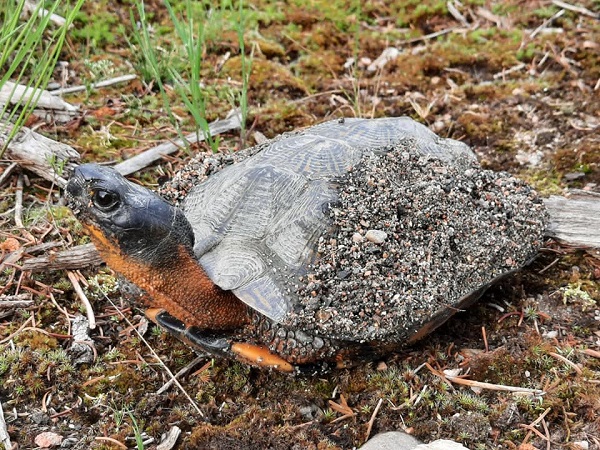
Blackwater River Common Gallinule
Despite what their name suggests, the Blackwater River Common Gallinule has been in rapid decline over the decades. More generally found in Ontario and Quebec, small pockets of Gallinule habitats have been found in Maine and eastern New Brunswick. A 9.4 hectare (23 acre) annual breeding site was brought to our foresters’ attention by the local Maine Inland Fish & Wildlife biologists in 2015. Wetland habitat loss is listed as the primary reason for this bird’s population decline, and Woodlands hopes that this site conservation and the thousands of hectares of wetlands they protect across JDI landbase (with the help of Ducks Unlimited) will see a growth in future populations.
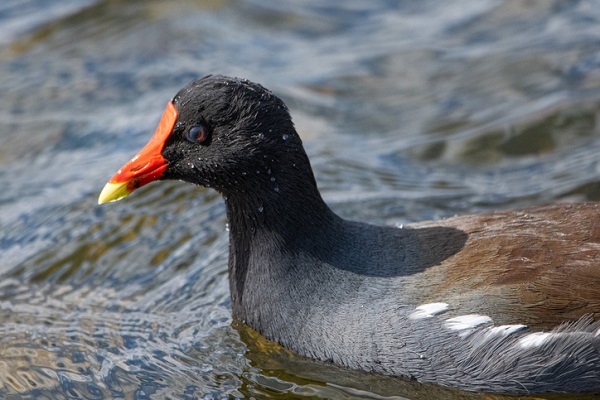
La Dune de Bouctouche
We developed this special park to preserve and restore one of the few remaining great sand dunes on the northeastern coastline of North America. It blends recreational opportunities with learning experiences to educate the public on the importance of this ecosystem and the plants and animals which call it home.
Marram grass is the most important plant to the Dune and to the coastal environment as its long roots help stabilize the shifting sands from storms. Without it, the Dune’s geography would undergo a shocking shift throughout the year. It’s a salt and cold weather tolerant halophyte that can shrug off the effects of salt spray and water: only 1-2% of the world’s flora fall within this species!
This crucial plant cannot withstand human disturbances such as walking or driving on it, which is why we have installed raised boardwalks for park visitors to appreciate the shoreline without damaging the surrounding ecosystem.
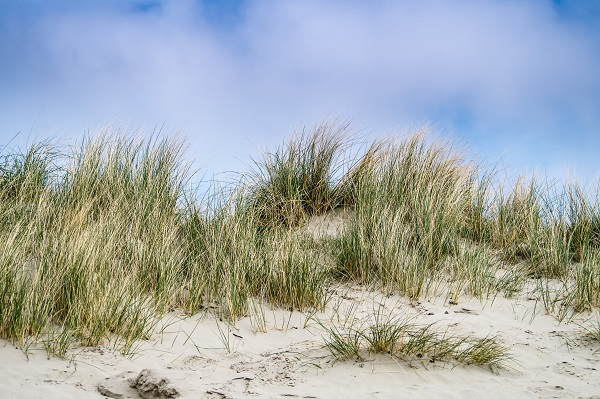
Since 1974, the Canadian Wildlife Service has conducted shorebird surveys in Atlantic Canada during the spring and fall migration months, of which La Dune de Bouctouche has been a part of for 25 years. La Dune is listed as an Important Bird Area (IBA), and is home to the piping plover, the ruga red knot, and the least sandpiper. La Dune and our other IBA, the Irving Nature Park, welcomes thousands of migrating shorebirds every year as they feed and rest.
